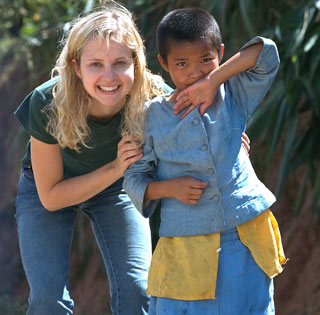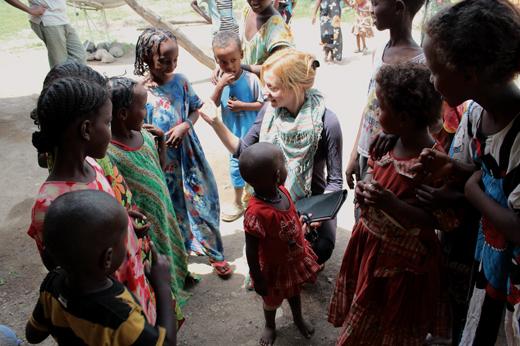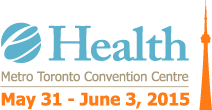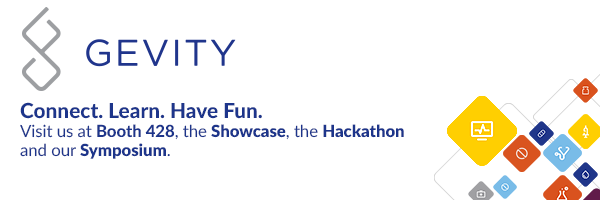Q1. How do you see health informatics in Canada influencing your humanitarian work with War Child Canada?
War Child Canada places a high priority on education, justice and economic development in war torn countries and all of our programs are oriented towards supporting these goals. Health information has an indirect influence on this work, because knowing where the greatest risks are coming from – where child and maternal deaths are the highest – and why this is happening has an influence on our decision-making. My own background is in public health in epidemiology, so I know that the best development approaches are iterative, and health informatics can also be useful to monitor progress, identify trends (especially those that can be life threatening), and modify your approaches on the ground if the evidence reveals they aren’t working. “How will we gather information and measure this?” is one of the most important questions (well, technically it’s two questions) you can ask when it comes to development practices.
Q2. Given the frontline tragedies you have witnessed in many areas in the world have complex drivers and solutions; do you see health informatics in Canada really have a role to play in providing solutions? If so, how?
Health Informatics can play an influential role in countries that are emerging out of conflict – those whose political and economic structures can support it. The sharing of knowledge and public education plays a key role in rebuilding infrastructures, identifying groups at risk, and documenting and sharing health information that allows governments and other international bodies to plan and reduce threats, especially the threat of epidemics in populations that are extremely vulnerable (those emerging from conflict, where health systems – including basic vaccination – have often broken down or been seriously impaired). In many post-conflict states, you are really starting from scratch. I learned this when I was working for the UN in Liberia in the late 90s, at the end of the war. Even the health records were lost or destroyed. It was almost impossible to track and identify threats – we didn’t even know which children, or how many of them, had been vaccinated. And it was worse in rural areas. Health informatics may seem like a luxury, but it has the potential to save large numbers of lives if that information is being compiled, shared and worked into health care strategies – anywhere in the world.
Q3. What are the top three ideas and approaches in health informatics you have seen in action in your humanitarian efforts that could be adopted in Canada?
Three areas for health informatics support – data and knowledge sharing of early warning signs of child health; educating and sharing information beyond urban centres; and a focus on mobility of health clinics to support those rural areas.
Q4. Public Health challenges have long known no borders, but given recent challenges, what connections do you see as required to improve global health and to prevent the spread of disease?
There are many public health challenges but the priorities we experience are not only tracking early warning signs, such as cluster of ebola or measles cases, but having the capacity at an international level to respond effectively. Unfortunately, this did not happen during the recent ebola outbreak in West Africa. Major international bodies missed the queues of how serious this was and how quickly it could spread in a post-conflict country with a still-shattered infrastructure (Liberia and Sierra Leone especially). So we need better mechanisms to compile and share information – the systems, and the networks, should be able to talk to one another and aggregate information. It should also, on the flip side, be able to easily disaggregate information to identify specific regional trends, such as inequities between rural and urban areas ; the ability to educate and share information to urban and rural population. When information informs policy, it is smarter and more responsive. But information alone isn’t enough – if we want to know how to contain threats like ebola, we have to be very clear about how we react effectively to this information and we can no longer afford to think in silos.
Q5. Based on your extensive, widespread experience in healthcare around the globe, how can e-Health/health IT help third-world countries cope with a health crisis like the Ebola epidemic?
Information sharing with the people in the health care sector and public awareness are critical in global epidemics. Creating local infrastructure is essential for regional development in developing countries so that communities can manage such crises. What does this mean? It means when it comes to preventing the threat of diseases we can’t think short term and we can’t think our aid dollars don’t matter. But knowing how to give becomes critical, because we will not prevent the next ebola crisis by simply donating once things are already out of hand and hoping that it will right itself. Regular monetary donations (weekly/monthly) to organizations that help to address some of the underlying structural deficits facing many countries in the global south – not just to support health care, but education and poverty reduction as well – this is how we reduce the overall risk of such threats in the future. It takes time. Regular support means organizations and the communities that rely on them can plan properly and respond accordingly – even before the rest of the world is paying attention. This is the kind of preventative approach communities at high risk of poverty and disease really need. Not hand-outs and condolences after-the-fact.
Q6. What is the number 1 health problem you have seen in your work in the most devastated regions of the world? As North Americans, how can we help solve this problem and what role, if any, does e-Health have in the solution?
 In my view, the number 1 health challenge and opportunity, and it may sound counter-intuitive for a doctor, is education. Health is directly tied to education and education levels. Education levels, as we know, correlate with income and a reduction in poverty rates. Education and income are also correlated with maternal, infant and child mortality. In my view, the number 1 health challenge and opportunity, and it may sound counter-intuitive for a doctor, is education. Health is directly tied to education and education levels. Education levels, as we know, correlate with income and a reduction in poverty rates. Education and income are also correlated with maternal, infant and child mortality.
So while e-health does not offer the solution, what it does offer is the opportunity to teach, train, and learn. It tells us where and who to watch; where the needs are. If an area is experiencing high rates of maternal deaths, for example, it is important to look at local literacy rates: how many of the women can read and write? How many of them have access to primary care? And, on the flip side, knowing where those risks are, IT also offers the opportunity to teach and train local care providers, some of whom may not have the skills they need but are eager to learn.
Q7. Considering your experience in war-torn countries, what gives you hope about the future for these countries, particularly around children and improving their health & safety?
People do extraordinary and courageous things in their everyday determination to create a better life for themselves and their children, and this gives us great hope for the future. They are an extraordinary people – they resolve to fight violence with their every breath. They believe that they are capable of building a better life, for themselves and for their children.
For countries that are emerging from war, health informatics can play a positive role in fostering better health care, ultimately reducing infant and child mortality. It also has the potential to support, through these efforts, lasting political and social security.
Q8. Many Canadians & North Americans become desensitized to seeing war & death on the nightly news. Do simple acts by individuals, like sponsoring a child overseas, donating money or volunteering with a relief organization like Red Cross, really make a difference? What are the most effective things we can do, both as individuals & health IT professionals that will lead to improved, more equitable healthcare in these countries?
The most effective thing that people can do is invest in local communities because they are the architects of change. War Child Canada does lend specific expertise – but it is the local communities that determine what expertise they need.
You do not need to go overseas to make a significant difference – in fact, if you do not have the training or background in development work, it is often better not to, because you can inadvertently do more harm than good. Instead, become a patron or donor. Give monthly contributions for the long term. This provides the local

communities with a consistent funding resource and allows them to plan their projects for the longer term. There is great need for generational change, and that requires long term funding. But if you want to see Africa, for example, then do it – it is a vast, beautiful and wondrous continent. But go as a tourist, spend $ in local markets, because unless you are specifically qualified for the task and can be sure your volunteer efforts aren’t displacing local workers or creating programs that cannot be sustained, your good intentions may not be producing the best outcomes. Development work is complex and challenging. It’s a mistake to think the “fixes” are easy and quick, or that all forms of “help” are effective.
|
 recently sat down with award-winning humanitarian, bestselling author and acclaimed public speaker, Dr. Samantha Nutt for a Question & Answer period where Dr. Nutt opened up about her experiences working abroad with War Child Canada, her views on Health Informatics (HI) and much more...
recently sat down with award-winning humanitarian, bestselling author and acclaimed public speaker, Dr. Samantha Nutt for a Question & Answer period where Dr. Nutt opened up about her experiences working abroad with War Child Canada, her views on Health Informatics (HI) and much more... 











 In my view, the number 1 health challenge and opportunity, and it may sound counter-intuitive for a doctor, is education. Health is directly tied to education and education levels. Education levels, as we know, correlate with income and a reduction in poverty rates. Education and income are also correlated with maternal, infant and child mortality.
In my view, the number 1 health challenge and opportunity, and it may sound counter-intuitive for a doctor, is education. Health is directly tied to education and education levels. Education levels, as we know, correlate with income and a reduction in poverty rates. Education and income are also correlated with maternal, infant and child mortality.